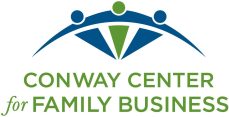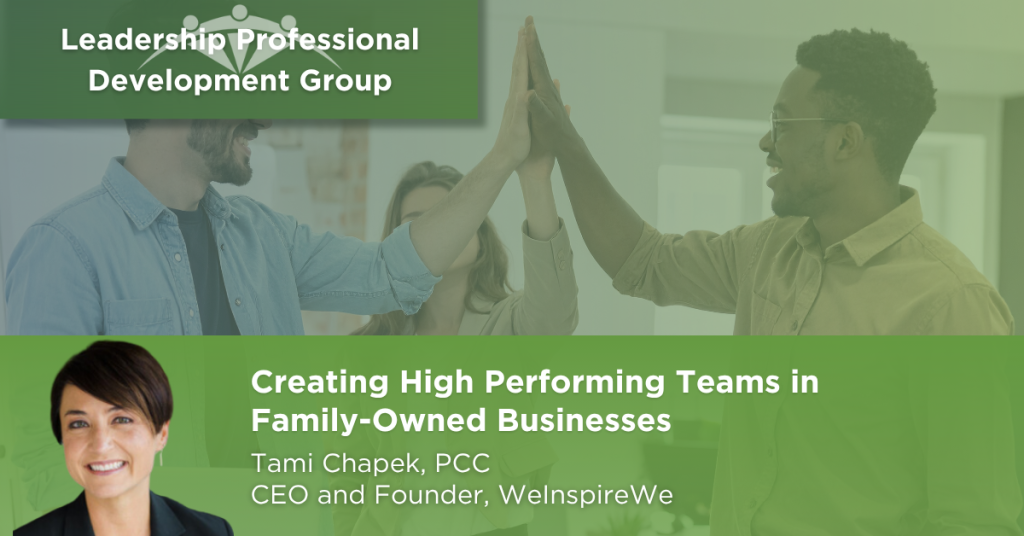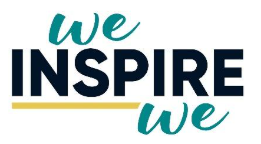High performance isn't found; it's engineered. For leaders in a family-owned business, this means moving beyond the traditional role of manager and becoming the Chief Architect of the team environment.
To unlock excellence, you must focus your energy on two vital areas: inspiring the high performing individual and intentionally designing the high performing team.
Part 1: Inspiring the Individual: The Intrinsic Value Approach
You can't buy commitment, but you can create the conditions where commitment thrives. The most powerful driver for all human beings is intrinsic motivation—the internal fuel derived from personal interest, challenge, and contribution.
The leader's first job is to discover what truly energizes each person, then align their work and growth potential to that source of energy.
Discovering Their Values
To truly inspire someone, you must know their specific drivers—their personal definition of success. The key is to stop assuming everyone is motivated by the same thing (usually money – which by the way is a fleeting source of inspiration) and start asking: what are their fundamental values?
You can start this journey by exploring their core intrinsic needs as defined by Self-Determination Theory:
- Autonomy (The Desire to Direct): Do they want to figure it out on their own?
- Mastery (The Urge to Grow): Do they thrive on new skills and challenging projects?
- Purpose (The Need to Connect): Do they need to see how their work supports a greater mission or the family legacy?
Whether you use the Self-Determination Theory or a personal values assessment, knowing what motivates your team members is crucial. If you want to dive deeper into identifying these specific values, you can utilize a focused tool: Identify Your Core Values with This Free Assessment.
The Leader's Action: Investing in Individual Inspiration
Once you know a team member's intrinsic values, your next steps are to lean into that value as a motivator for high performance. For example:
- If they value Autonomy: Define only the outcome and the deadline, trusting them to own the 90% in between.
- If they value Mastery: Frame their next task as a "challenging growth opportunity" or invest in training that increases their expertise.
- If they value Purpose: Constantly reinforce how their daily output directly supports the family's long-term mission and reputation.
- And more…
Part 2: Constructing the Team by Designing for Diversity
A high-performing team (HPT) is not accidental; it is intentionally designed. Your role as the leader is to assess and create a cognitively diverse team, ensuring the structure supports synergy, resilience, and higher performance.
The 4 Pillars of a High-Performing Team
Every successful team stands on these foundational pillars:
- Psychological Safety: The shared belief that the team is safe for interpersonal risk-taking—admitting mistakes or challenging an idea without fear. The leader must model vulnerability first.
- Clarity: Everyone knows the mission, their specific role, and the standards for quality.
- Reliability: Team members trust in mutual accountability—promises will be kept and work will be delivered.
- Impact (or The Why): The team genuinely believes their work makes a measurable difference.
Assessing Your Current Team Mix (Cognitive Diversity)
The biggest failure in team design is staffing for skill alone. True excellence comes from staffing for perspective. A team of all experts who think alike will suffer from severe blind spots and will not push the work beyond status quo.
To avoid this, assess your current team mix against the four essential Cognitive Archetype Tension Pairs:
| Archetype Pair | Roles and Contributions | Why the Tension is Necessary |
|---|---|---|
| 1. Strategy & Execution | The Visionary vs. The Detail Expert | Balances ambitious strategy ("What If") with concrete execution (metrics and process). |
| 2. Challenge & Empathy | The Skeptic vs. The Customer Advocate | Balances internal risk assessment ("Why not?") with external value and purpose. |
| 3. Context & Efficiency | The Historian vs. The Process Optimizer | Balances institutional context and avoiding past failures with optimizing current workflows and efficiency. |
| 4. Truth & Trust | The Data Translator vs. The Relationship Builder | Balances objective truth (metrics) needed for correction with the cohesion needed for morale and team stability. |
As the Chief Architect of this high performing team, you should regularly assess the dynamics of the team to ensure that the team is well-structured and focused on optimal results. Use this framework to review a current team. Is your team full of Visionaries but lacking the Skeptic? If so, you are taking on high, unexamined risk. This assessment reveals both gaps for future hires and opportunities for current team member growth.
Key Takeaways for the Family Business Leader
Your leadership actions today directly secure the business's future. Use this checklist to operationalize HPT principles:
To Inspire Individuals (Personal Focus):
- Learn Values: Commit to a formal or informal conversation with two key team members this week to understand their intrinsic values (Mastery, Autonomy, Purpose).
- Inspire Individually: Based on their values, commit to finding one individual way to inspire each person this month (e.g., granting more autonomy over their schedule or assigning a skill-stretching project).
To Design/Empower Teams (Strategic Focus):
- Assess Gaps: Use the Cognitive Archetypes framework to assess the mix of your most critical team. Identify the one missing archetype that presents the greatest risk to your business.
- Grow Talent: Use the identified gaps to create growth opportunities for existing team members by formally asking them to step into that missing role (e.g., "For the next project, I need you to be our Skeptic."). This simultaneously mitigates risk and builds a more diverse talent pipeline.
Want to accelerate your journey from manager to Chief Architect of High Performance? Reach out to me today to find ways to develop your leadership skills to inspire individuals and cultivate high-performing teams.
Tami Chapek, PCC
CEO and Founder | Executive Leadership Coach
WeInspireWe
If you are interested in topics that address leadership roles in your family-owned business, please join us at our Leadership Development monthly sessions that Tami facilitates. Contact Amy at adotts@familybusinesscenter if you have any questions about this group.


